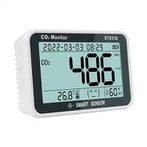Method for Determining Transistor Polarity with a Digital Multimeter
The figure shows the method of using the PN junction gear to distinguish the NPN-type transistor. Connect the red test lead to one pin, and connect the black test lead to the other two pins respectively to measure a set of data. Then, connect the red test lead to another pin, connect the black test lead to the other two pins respectively to measure another set of data. Next, connect the red test lead to the third pin, and connect the black test lead to the other two pins respectively to measure one more set of data. Among the three sets of measurement data, if in one set, the two data are both around 600 (this is the voltage drop of the PN junction), it indicates that the pin connected by the red test lead is the base, and the transistor is an NPN-type transistor.
For a transistor, only when the red test lead is connected to the base and the black test lead is connected to the other two pins, the digital multimeter will display the forward voltage drop after the diode is turned on, which is around 600. Since a large number of NPN-type transistors are currently in use, for the sake of convenience, the red test lead should be connected to one pin mainly to determine whether it is an NPN-type transistor.
If in the above measurement, instead of having a set of data with a value of around 600, a set of data both show a value of "1", it indicates that the transistor is a PNP-type transistor, and the pin connected by the red test lead is the base of the transistor. At this time, you can also connect the black test lead to the base of the transistor and the red test lead to the other two pins.






